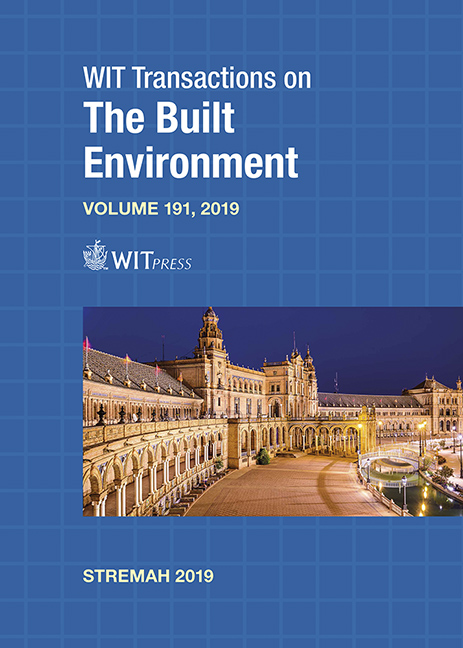STRUCTURAL ASSESSMENT OF DUBROVNIK CATHEDRAL, CROATIA
Price
Free (open access)
Transaction
Volume
191
Pages
12
Page Range
467 - 478
Published
2019
Paper DOI
10.2495/STR190401
Copyright
WIT Press
Author(s)
JOSIP GALIĆ, HRVOJE VUKIĆ, DAVOR ANDRIĆ
Abstract
In this paper a masonry baroque Dubrovnik Cathedral is analysed using the structural assessment method specific for historical buildings. The paper also describes the phases of an integrated approach to obtain accurate structure condition according to visible cracks and its seismic resistance capacity, with possible strengthening techniques. The Dubrovnik Cathedral is a masonry baroque church built in the period from 1671 to 1713. It was built in the same place where the 12th century Romanesque Cathedral had collapsed in the catastrophic earthquake of 1667. The present Cathedral is a monumental three-nave basilica with a dome over the crossing. In its lifetime the Baroque Cathedral did not show any vulnerabilities until 1979, when it was hit by another earthquake, in which the Cathedral structure was slightly damaged. After the 1979 earthquake the Cathedral was retrofitted from 1981 to 1986 with the aim of increasing the structure capacity under seismic loading. Soon after the retrofitting, cracks on the main columns of the Cathedral started to appear at its base. This was the reason a structural assessment of the Dubrovnik Cathedral was conducted. The activities for the assessment involved historical research based on the analysis of written documents and historical maps, with a focus on the previous major structural changes over the centuries. Visual inspections were undertaken to identify the location and extent of cracks and construction techniques. The assessment also included a geometrical survey of the Cathedral, which was used to develop a three-dimensional finite element model. The numerical simulations led to determining the damage distribution and to identifying the most vulnerable elements. It was used for a comparison between the numerical results and the damage survey. All this led to the conclusion and to identifying the reason for the crack occurrence on the Cathedral structure after the performed strengthening and reconstruction in 1986.
Keywords
structural assessment, structural analysis, historical buildings, masonry




